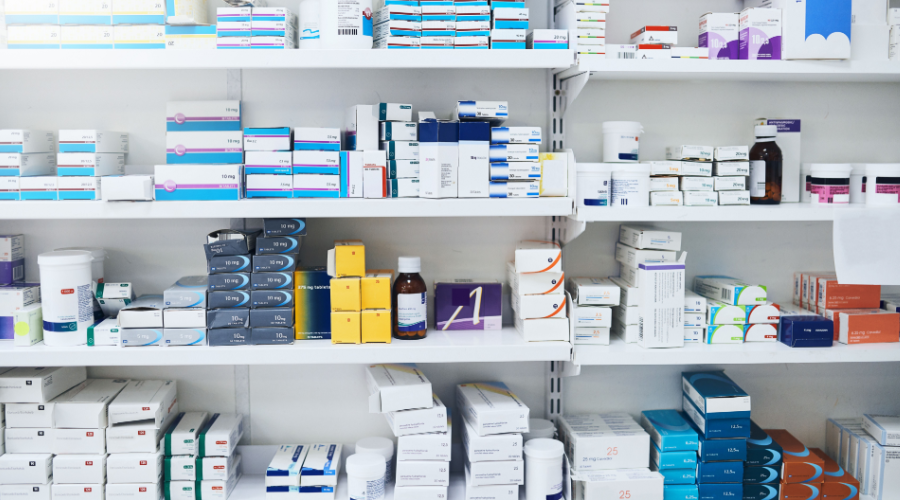Sustainability is no longer a trend. Today’s consumers expect businesses to have earth-friendly practices in place.
While greening your pharmacy may sound like an expensive undertaking, studies show that committing to the environment can actually become an economic boost for businesses.
Harvard Business Review argues that by thinking outside the box to make your pharmacy more sustainable, you can actually come up with new innovations to make your business more efficient.
It’s also a top-notch way to build loyalty among your patients. Nearly two-thirds of people report they feel a responsibility to purchase products that are good for the environment — and they are often willing to pay more for products they believe are good for the environment.
Here are seven ways you can leverage sustainability to build a stronger business.
1. Help patients recycle
Most prescription bottles are made of #5 plastic, which is technically recyclable, but these bottles are not accepted by many municipal curbside recycling programs because of their size.
Instead of letting bottles languish in a landfill after you’ve dispensed medications, invite your patients to return the bottles to the pharmacy. Even if they can’t be picked up from the curb, local recycling facilities may accept prescription bottles if they are delivered to the center.
Recycle Nation can help you find a facility that takes #5 plastics in your area. Eco-minded patients will appreciate that you’re going the extra mile to make it easy for them to make a sustainable choice.
2. Have eco-friendly product selections
Stock sustainable alternatives for as many products as you can in your front end. Patients may pay a little more for cleaning supplies that don’t have harsh chemicals. From cosmetics to cleaning supplies, look for products that have hypoallergenic ingredients, uses recycled materials, and won’t harm the environment if they are thrown away.
Don’t only think about the products themselves, but also the packaging. Ditch products that use single-use plastics for products with compostable or biodegradable packaging.
Locally made products can also appeal to eco-conscious patients. They are inherently better for the environment because they incur fewer transportation costs to get from the manufacturer to pharmacy shelves.
Draw attention to your line of sustainable products by using shelf-talkers comparing them to the traditional, non-sustainable options.
3. Offer higher quality, lasting options
Products don’t have to be specifically marketed as sustainable to appeal to the eco-friendly crowd. A recent survey from McKinsey found that among German and UK consumers, 65 percent wanted to buy products that are high quality and will last a long time.
Instead of pushing your lowest-priced items, showcase options that patients can invest in. Some patients may only want to spend $30 on the cheapest hairdryer, but others will be willing to spend $100 on an upgraded version because they know it will last them for many years to come.
4. Make upgrades (and brag about them)
Make sustainable changes to your business to demonstrate your commitment to the environment.
You can make small changes, like switching from plastic bags to recyclable paper options at checkout, or big ones, like installing panels on your roof.
Some common methods for making your business more sustainable:
- Using the Internet of Things products like smart thermostats to reduce energy usage
- Installing Graywater plumbing to reduce water waste
- Upgrading windows to insulate your building during the winter
- Purchasing carbon offsets to make your business carbon neutral
- Refurbishing old equipment instead of purchasing something new
You don’t have to implement these things all at once, but every time you move toward sustainability, let your patients know. Post on Facebook about the process of installing solar panels on the roof or announce your purchase of carbon offsets in your email newsletter.
5. Praise patient contributions
As you work to make your pharmacy more sustainable, let your patients in on your successes.
Take a cue from Chipotle’s Real Foodprint. When the burrito chain committed to sustainable practices, they began using the Foodprint to let their customers know about the impact they’ve made by eating at Chipotle. The tool tells them how much water they’ve saved, how soil health has improved, and more.
You can similarly acknowledge patients’ contributions. If a patient is enrolled in medication synchronization, acknowledge how much carbon they’ve saved by not taking multiple trips to the pharmacy. Use your loyalty program to reward people who purchase sustainable products.
When you include patients in the cause, shopping at your pharmacy will start to feel like a good deed.
6. Ask employees for ideas
Consumers aren’t the only ones who are attracted to sustainable businesses. Studies show that employee morale and loyalty increase when businesses have sustainability programs.
Involve your employees in your efforts to create a more sustainable pharmacy. Your staff members may have different insights on how to make the business more environmentally friendly, and giving them ownership over a project will help them feel invested in their work at the pharmacy.
With a sustainability program in place, your employees can be even more proud of the work they do and create a sense of purpose beyond the pharmacy counter.
A Member-Owned Company Serving Independent Pharmacies
PBA Health is dedicated to helping independent pharmacies reach their full potential on the buy-side of their business. Founded and owned by pharmacists, PBA Health serves independent pharmacies with group purchasing services, wholesaler contract negotiations, proprietary purchasing tools, and more.
An HDA member, PBA Health operates its own NABP-accredited secondary wholesaler with more than 6,000 SKUs, including brands, generics, narcotics CII-CV, cold-storage products, and over-the-counter (OTC) products — offering the lowest prices in the secondary market.












